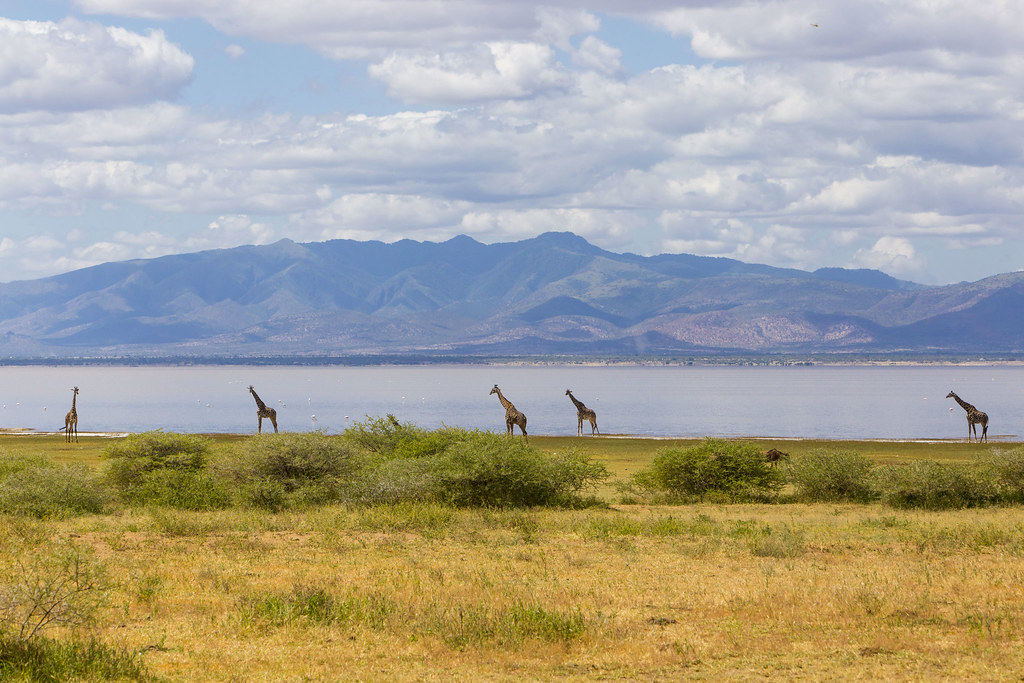Night Game Drive at Lake Manyara National Park
The Night Game Drive at Lake Manyara National Park offers a distinctive opportunity to explore the area while seeking various wildlife species. Lake Manyara National Park is a wildlife observation site situated in northern Tanzania, southwest of Arusha.
Night Safari at Lake Manyara National Park
Nocturnal wildlife species, including lions, leopards, hippos, genets, and civets, can be observed on nighttime game drives in Lake Manyara National Park.
This national park is renowned for its uncommon tree-climbing lions, observable during a safari through the rich ecosystem of Lake Manyara National Park. Elephants are frequently observed in substantial quantities throughout the national park. During the nighttime game drive in Lake Manyara National Park, tourists are escorted by a knowledgeable ranger guide who ensures visitor safety and assists in identifying nocturnal wildlife species.

Lake Manyara, a prominent attraction inside the national park, serves as an excellent site for observing nocturnal wildlife species such as lions, leopards, and hyenas during a night game drive.
Night game drives may last up to 3 hours, allowing for exploration of the wilderness in Lake Manyara National Park after dark. Spotlights may also be utilized during nocturnal game drives to observe wildlife species within the national park.
Additional game drives conducted at Lake Manyara National Park include the following:
Game drive
Morning game drives occur at dawn, during which wildlife species like as elephants, lions, and antelopes are readily observable due to their heightened activity levels. Wildlife species in Lake Manyara National Park include elephants, tree-climbing leopards, gazelles, waterbucks, giraffes, warthogs, bushbucks, and impalas, among others.
Afternoon and evening game drives
In Lake Manyara National Park, in addition to night game drives, guests can partake in afternoon or evening game drives while exploring the park and observing diverse wildlife species.
Comprehensive day-long game excursions
Lake Manyara National Park offers the opportunity to participate in full-day game drives. This type of game drive commences in the morning and is followed by an additional game drive later in the day. Wildlife observation in Lake Manyara National Park is optimal from June to October, the dry season, when numerous species congregate around water sources, facilitating visibility. Nonetheless, wildlife species are observable throughout the entire year.
The varied environment of Lake Manyara National Park comprises woods, marshland, savannah plains, and a small alkaline lake. Diverse wildlife species can be observed at these various locations across the national park.
The shallow alkaline lake occupies a significant portion of the national park, where various wildlife species and birds can be observed along the beaches of Lake Manyara. While on safaris in Lake Manyara National Park, guests can also observe the Great Rift Valley.
Visitors to the evergreen rainforest of Lake Manyara National Park can observe baboons, black and white colobus monkeys, waterbucks, and other bird species while on safari.
Activities conducted in the forest of Lake Manyara National Park encompass birdwatching and canopy walks. Over 500 avian species can be observed in the national park, including flamingos, pelicans, yellow-billed storks, grey herons, and numerous others.
Canopy walks
Canopy walks are conducted during safaris in the forested region of Lake Manyara National Park. The trek occurs via the treetop walkway, a suspension bridge approximately 18 meters above the ground. At the terminus of the bridge, there are platforms where visitors can appreciate the scenic vistas of the national park.
The canopy walk occurs in the northern section of the national park, adjacent to one of the entrance gates of Lake Manyara National Park.
Canoeing excursions
Canoe excursions occur in Lake Manyara National Park during safaris, allowing participants to observe various avian and wildlife species.
Bird watching
Tourists may partake in birdwatching on their safaris at Lake Manyara National Park, which hosts approximately 500 bird species. Birdwatching is optimal from November to April, when both migratory and resident birds are observable in the national park.
The avian assemblage comprises flamingos, rufous-tailed weavers, ashy starlings, hornbills, grey-crowned cranes, cormorants, among several more. Bird viewing can be conducted at many locations surrounding the national park, including the floodplains.
Community engagement
Tourists en route to Lake Manyara National Park can pause at Mto wa Mbu village, located along the path to the park. This activity entails contacts between tourists and local populations, including the Maasai people.
During community visits, tourists participate in activities such as touring local homesteads, exploring the local market, and visiting arts and crafts shops where the Maasai exhibit traditional beads, earrings, necklaces, anklets, and shukas, all crafted by local women for sale.
This excursion occurs with a village guide who serves as an interpreter, allowing travelers to experience the local lifestyle and discover Mto wa Mbu town.
Participation in various activities at Lake Manyara National Park necessitates the payment of entrance fees, approximately 53 USD for non-residents, with differing rates for foreign residents and East Africans.
In addition to Lake Manyara National Park, other safari sites in northern Tanzania include the renowned Serengeti National Park (the oldest national park in Tanzania), Ngorongoro Conservation Area, Tarangire National Park, and Arusha National Park. Lake Manyara National Park is accessible by a two-hour drive from Arusha.
